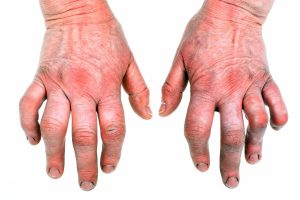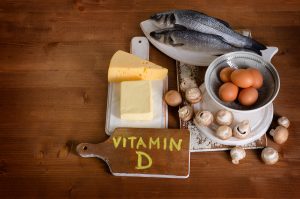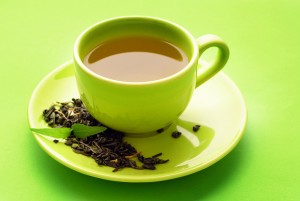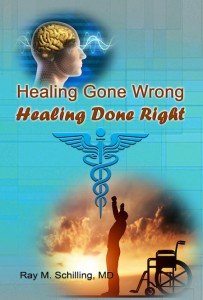Every year the American Psychological Association (APA) monitors the American public how stress drives our lives. This yearly report has been compiled since 2007. About 75% of the people questioned reported that they have experienced moderate to high stress over the past month.
Symptoms when stress drives our lives
What kind of symptoms can stress cause? It can cause sleep deprivation, anxiety, headaches and depression. But there can be more symptoms from any disease that stress may cause. The “Stress in America” report from February 2016 shows on page 5 that unhealthy life habits are used by low-income Americans to cope with stress. A bar graph shows that watching television or movies for more than 2 hours per day is common. Another way of coping is to surf the Internet more often, take more naps or sleep longer. Eating more, drinking alcoholic beverages and smoking more are other unhealthy ways to cope with stress.
As the stressed person gains extra weight and eventually becomes obese, there is a higher rate of diabetes that can develop with all of its complications.
Causes of stress in our lives
The “Stress in America” survey was based on 3,068 adults in the US who completed the survey during August 2015. 72% were stressed out about financial issues. 22% of these said that they were extremely stressed in the past month as a result of money concerns. Other common concerns were work, the economy, family responsibilities and concerns about personal health. Average stress levels among Americans decreased when compared to 2007. On a 10-point stress score respondents rated their stress at 4.9 in 2016 compared to 6.2 in 2007. But according to the American Psychological Association this is much higher than a stress rating of 3.7 considered to be a healthy level.
Stress affects people from all walks of life, workers, women, young adults, students and those with lower incomes.
“Stress is caused by the loss or threat of loss of the personal, social and material resources that are primary to us” Stevan Hobfoll, PhD, a clinical psychologist from Rush University Medical Center said. “So, threat to self, threat to self-esteem, threat to income, threat to employment and threat to our family or our health…” is what causes stress.
Stress drives our lives causing disease
When stress is too much for our system, we are starting to see pathology develop. “Stress is seldom the root cause of disease, but rather interacts with our genetics and our state of our bodies in ways that accelerate disease” professor Hobfoll says. The following are common diseases that can result from chronic stress.
Heart attacks and strokes
In a 2015 Lancet study 603,838 men and women who worked long hours were followed for a mean of about 8 years with respect to heart disease or strokes. All of the subjects were free of heart attacks and strokes when they entered into the study. There were a total of 13% more heart attacks in those who worked extra hours in comparison to those who worked 40 hours per week or less. With respect to strokes there were 33% more strokes in those who worked long hours. Researchers noted a dose-response curve for strokes in groups with various workloads. Compared to standard working hours there were 10% additional strokes for 41-48 working hours, 27% for 49-54 working hours and 33% for 55 or more working hours per week.
Stress drives our lives and causes substance abuse
In order to cope with stress many of us treat daily stress with alcohol. It makes you feel good subjectively, but it can raise your blood pressure causing heart attacks and strokes down the road. A low dose of alcohol may be healthy, but medium and high doses are detrimental to your health.
Next many people still smoke, although scientists have proven long time ago that it is bad for your health. It can cause heart attacks, various cancers and circulatory problems leading to leg amputations.
Overeating is another common problem. Comfort food relieves stress, but it puts on extra pounds. As you know it is easier to put weight on than get it off. Being overweight or being obese has its own problems: arthritis in the hips and knees makes walking more difficult. The metabolic syndrome sets in, which is a characteristic metabolic change causing diabetes, high blood pressure, heart attacks, strokes and certain cancers. The more weight you carry, the less likely you are to exercise. This deteriorates your health outlook.
Diabetes
Stress causes too much cortisol secretion from the adrenal glands. This raises blood sugar, and when chronic can cause diabetes. In addition unhealthy eating habits associated with stress can cause weight gain and high blood sugars leading to diabetes.
In a 2012 California study 148 adult Korean immigrants were examined. They all had elevated blood sugars confirming the diagnosis of type 2 diabetes. They had a elevated waist/hip ratio.
A high percentage of the study subjects had risk factors for type 2 diabetes. This included being overweight or obese and having high blood glucose readings. 66% of them said that they were feeling stressed, 51% reported feeling anxious, 38% said they were feeling restless, 30% felt nervous and 3% said they were feeling hopeless.
An Australian long-term follow-up study computed risk factors for developing type 2 diabetes. Stress was a major contributor to diabetes.
A 30-day episode of any anxiety disorder had a 1.53-fold risk to cause diabetes. A depressive disorder had a 1.37-fold risk to cause diabetes and posttraumatic stress disorder had a risk of 1.42-fold to cause diabetes.
Infertility
Stress changes hormones in women causing ovulation problems and infertility. 1 in 8 couples in America have problems getting pregnant. Physicians identified stress as at least a contributing factor. But in men stress can also reduce sperm count and semen quality as this study describes.
Alzheimer’s disease
A 2010 study from Gothenburg University, Sweden examined 1462 woman aged 38-60 and followed them for 35 years.
Psychologists assessed the stress score in 1968,1974 and 1980. 161 females developed dementia (105 Alzheimer’s disease, 40 vascular dementia and 16 other dementias). The risk of dementia was higher in those women who had frequent/constant stress in the past. Women who had stress on one, two or three examinations suffered from higher dementia rates later in life. Researchers compared this to women did not have any significant stress. Specifically, dementia rates were 10% higher after one stressful episode, 73% higher after two stressful episodes and 151% higher after three stressful episodes.
Remedies for stress
Before you can attempt to remedy stress, you must first detect that you are under stress. You can recognize this when you have problems sleeping, you suffer from fatigue, when overeating or undereating is a problem, and if you feel depressed. Others may feel angry or are irritable. Some bad lifestyle habits may also make you aware that you are under stress. You may smoke or drink more in an attempt to manage stress. Some people abuse drugs.
Here are some suggestions how to remedy stress:
- Seek support from family, friends or religious organizations. If you engage in drugs or alcohol overuse or you feel suicidal, it is best to seek the advice from a psychiatrist or psychologist.
- Engage in regular exercise. This produces endorphins, the natural “feel-good” brain hormone. This reduces symptoms of depression and improves sleep quality.
- Do something that increases pleasure, such as having a meal with friends, starting a hobby or watching a good movie.
- Positive self-talk: avoid negative thoughts like “I can’t do this”. Instead say to yourself “I will do the best I can”. Psychologists have developed a technique where they teach patients how to turn negatives into positives. Psychologists call this therapy “cognitive therapy”. You may want to seek the advice of a psychologist to have a few cognitive therapy sessions.
- Daily relaxation: you may want to use self-hypnosis, tai-chi exercises or meditation to reduce your stress levels.
Conclusion
Stress is very common. Diverse diseases like heart attacks, strokes, diabetes and Alzheimer’s disease can all be caused by stress. It is important to minimize the impact of stress by seeking family support and support from friends. Engaging in regular exercise will release endorphins and make you feel better. Relaxation exercises and seeking counselling can all help you to manage stress. You cannot ignore or simply tolerate this force in your life. Stress is indeed there, but we can make a difference by managing it to avoid that stress manages us.















